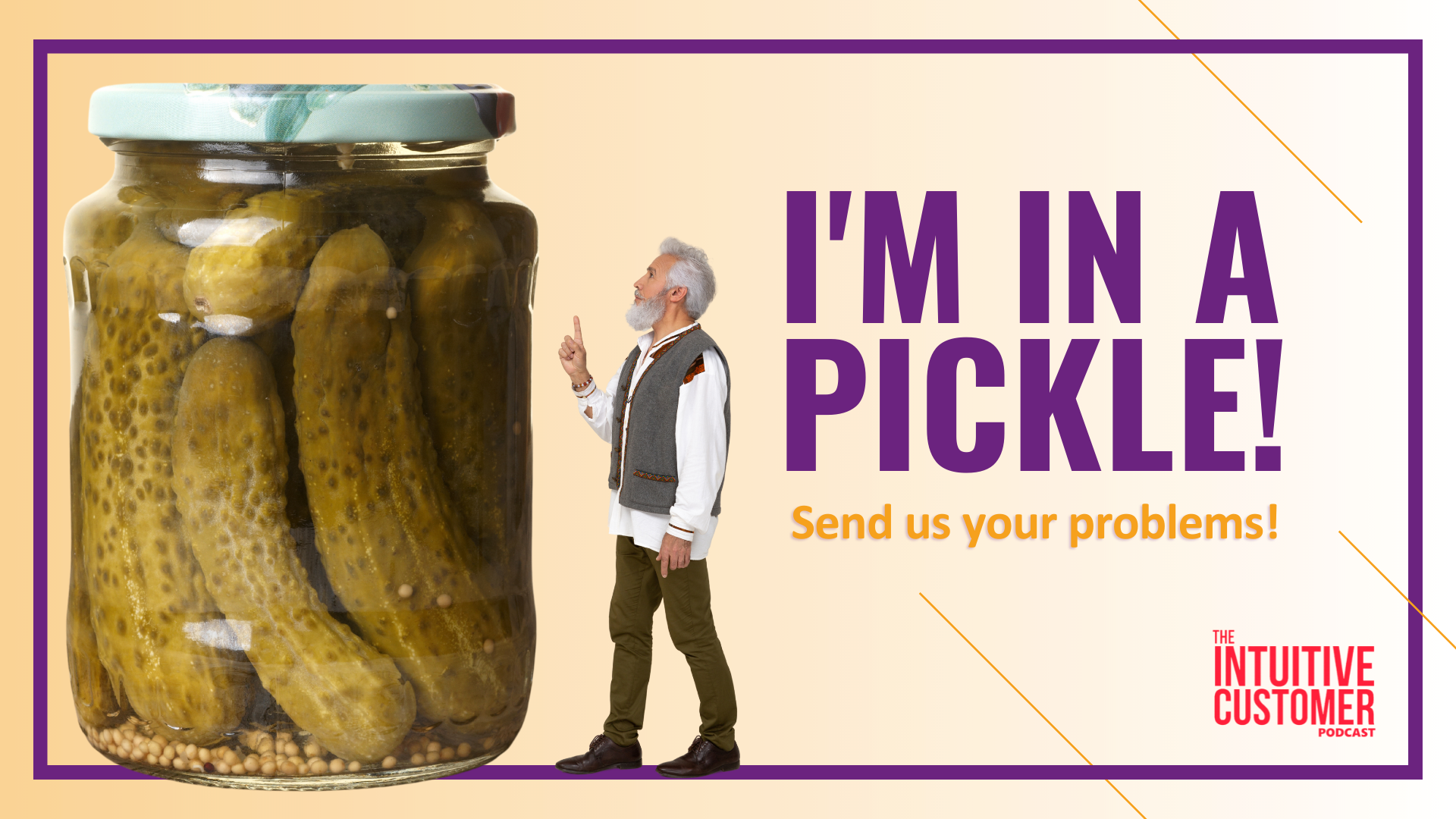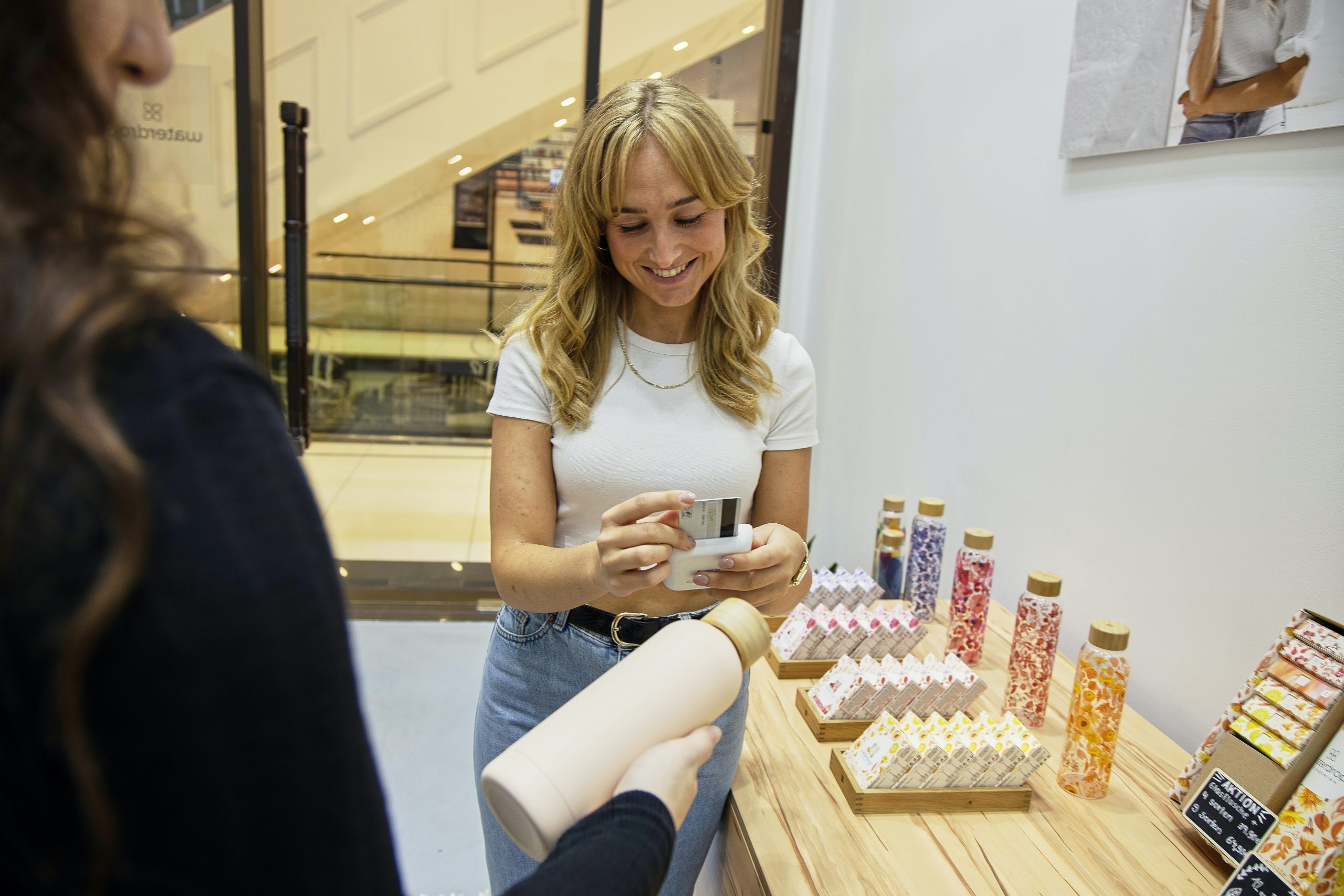The Future of Brick and Mortar
One of the features of The Intuitive Customer podcast is “I’m in a Pickle,” where listeners come to us with business problems that they would like our advice on solving. We had a pickle about the future of brick-and-mortar after the pandemic that I thought I would share with you, too.
Here’s what Bjorn had to say:
Hello, Ryan and Colin, and thanks for a great show. I follow you every week, and I have a pickle. It’s about brick-and-mortar retail because, after the pandemic, physical retail is bouncing back as people want a real-life experience after the lockdowns and other events. Customer Experience management has been absorbed into Customer Science in the past couple of years; how will that apply to brick and mortar? How can these retailers benefit from the new technologies? Thanks for considering this topic, and have a great day.
Retail is Back, But Different
The other day, I was in a store thinking, “it’s great to be out and about, putting the pandemic behind us.” However, the effects of the pandemic linger as the market, and brick-and-mortar experiences have changed. One of these changes, as Bjorn says, is the introduction and adoption of Customer Science.
Customer Science is the integration of artificial intelligence (AI), customer data, and behavioral science. I see this development as the new variant of Customer Experience moving forward, even in brick-and-mortar settings.

Stores were doing business the same way for a long time. Then COVID hit, forcing them to change everything. Now, they are transitioning back to unrestricted in-person interactions, but not to the same place they were for all those years.
The new skills and technologies business developed with digitalization have changed how people shop at a fundamental level. So, what Bjorn wants is something I think all retailers should want: a way to combine the best of everything we’ve learned in physical and digital spaces to create a great Customer Experience. Since I assume many of you are scratching your heads about the same problem, I thought I would also address that here.
Almost Perfect
Let me start by sharing a recent experience that can help shed some light on what I mean about integrating Customer Science into physical interactions. So, I have lost nearly 100 pounds over the past year and needed to replace my wardrobe. I was in a retail store for Nautica, a clothing brand in the States. While in the store, I took them up on a promotion that if I gave them my mobile number so they could text me, Nautica would give me a discount.
After receiving a few texts after the shopping trip, I browsed the website. I looked at a few things and then got off the site. Half an hour later, Nautica texted me, “We’ve seen that you’ve been on our website. Why not check this item at 70% off?” I like a bargain, so I looked at it.
It was 70% off. However, it only came in extra small. The experience was annoying to me. Everything I looked at on the Nautica site was Large. It didn’t seem like a great leap to send me a link to view an item that came in Large. I have done well and dropped a lot of excess weight, but I am still far from an XS!
This story represents the good and bad that can occur when integrating the two types of shopping:
- It was good to marry the in-store experience with the digital one.
- It was good to motivate me in the retail store to give them my mobile number so Nautica could present me with opportunities I might fancy putting into my virtual cart.
- The engagement rate was high for me, which is saying something because I usually skip this kind of stuff.
These are the opportunities that Nautica capitalized on nicely, but the (extra) small detail at the end was a miss. Nautica’s approach was almost perfect. All that was missing was a holistic approach to the integration that included my sizing before showing me a “must-see” item. Without a holistic approach to the combination of these channels, it could also be a problem for Bjorn and end up annoying his customers instead of surprising and delighting them.
Knowing All the Pros and Cons Helps
One of the most important things to understand for the successful integration of technology into physical experiences is what people get from the various channels for your business. Once you consider that motivation, it’s much easier to develop an effective customer strategy that will enhance those experiences.

For example, the same people might shop in a different channel than usual because of the circumstances of the purchase, e.g., they needed it faster than the online channel could get it to them. However, it might also be a customer segmentation issue where different people want different things at different times, e.g., this group likes people, so they go to physical stores. This other group avoids contact with other humans, so they only shop online.
A significant part of this motivational understanding starts with knowing the advantages and disadvantages of each channel. For example, one of the primary differences between a brick-and-mortar place and an online exchange is the presence of people. But, then, you apply that to both experiences. So, in the online experience, how do you make up for the lack of a human representative? For the physical experience, how is the human presence facilitating instead of detracting?
Customers are almost split on this issue, too. In my due diligence regarding Bjorn’s problem, I came across a report by McKinsey called, “What’s Next for Digital Consumers? May 23rd, 2021.” The report says some consumers went to digital channels because of COVID 19 or for convenience, but others still preferred the physical channel. Here are two of the stats McKinsey shared also:
- 45% of people’s main reason for switching to digital was the pandemic, but 43% was for greater convenience and availability.
- The main reason for not switching to digital was because the respondents favor talking to a human being (24%)
Another essential consideration in your strategy is customer intent. A few months ago, we spoke with GroupBy, which has done much with Customer Science integration. One of the significant discussions we had in that webinar was about customer intent. Google had to work hard to get their AI to understand the meaning and get the right results in front of searchers.
However, that isn’t as difficult in an in-person interaction. The difference is the presence of people.
We underestimate the power of human beings to interpret what customers are looking for rather than what they put in a search bar. With specific problems, and despite AI bots’ improvement, humans are better at making those soft connections between things.
So, there are times when human interactions make things a lot easier, but there are also times when humans introduce noise and make it more difficult. It’s not that one is better, and one is worse; it’s just that they do different things.
We touched on these topics before. First, we covered a case study about Nissan in the Middle East that found a way to change how people shopped for their cars to an online experience. Second, one on the Metaverse discussed how stores could augment reality with technological integrations.
So, the question becomes, can you leverage the strengths of both of those things? For example, are there opportunities within the physical space for people to interact with a computer rather than a sales clerk? Because that would be more efficient and useful for that segment of customers in that specific purchase paradigm. Likewise, are there opportunities on your website to interact through chat or some other feature with a human being if that facilitates?
So, What Does This Mean to You?
In terms of looking at this whole topic, I have a couple of summary points.
- Have a holistic approach. To successfully meet the challenges of the brick-and-mortar experiences of the future, the different channels of your experiences should be holistic. I can’t emphasize that enough. Operationally, you might have divided up the responsibility for these channels among other teams, i.e., one team for online, one for retail, etc. However, customers don’t see it that way. To them, all the channels are the same thing. So, if you aren’t integrating those touchpoints effectively, it doesn’t portray your brand in a way that enhances the experience for anybody.
- Use online to reduce pain points in the physical experience, and vice versa. Another bit of advice for rising to the future of brick and mortar is to leverage what works online to fix pain points. Consider opportunities to use digital through an app or in-store to improve moments in the store’s customer journey that do not work well. Digital interactions in a physical experience might be able to fix those friction-causing moments. Likewise, you can also look for ways to incorporate physical advantages into the digital experience. Perhaps it is introducing humans into the process, which is an area that might have genuine benefits for you.
- It’s not all or nothing. I do not support a strategy where you abandon one experience for another. People will always want to go to a physical store and touch the product or see the scale. Some people need to hold things to know whether they suit them. Brick and mortar will always have a place, but the integration with the online experience will keep it relevant.
We were all in person before we went all online, and now we have both. Can we use the advantages of each modality simultaneously to make things better overall for everyone? The answer is yes and doing it is the future of retail.
If you have a business problem that you would like some help with, contact me on LinkedIn or submit your pickle here. We would be glad to hear from you and help you with your challenges.

There you have it. No promotions, no gimmicks, just good information.
Think reading is for chumps? Try my podcast, The Intuitive Customer instead. We explore the many reasons why customers do what they do—and what you should do about it. Subscribe today right here.


